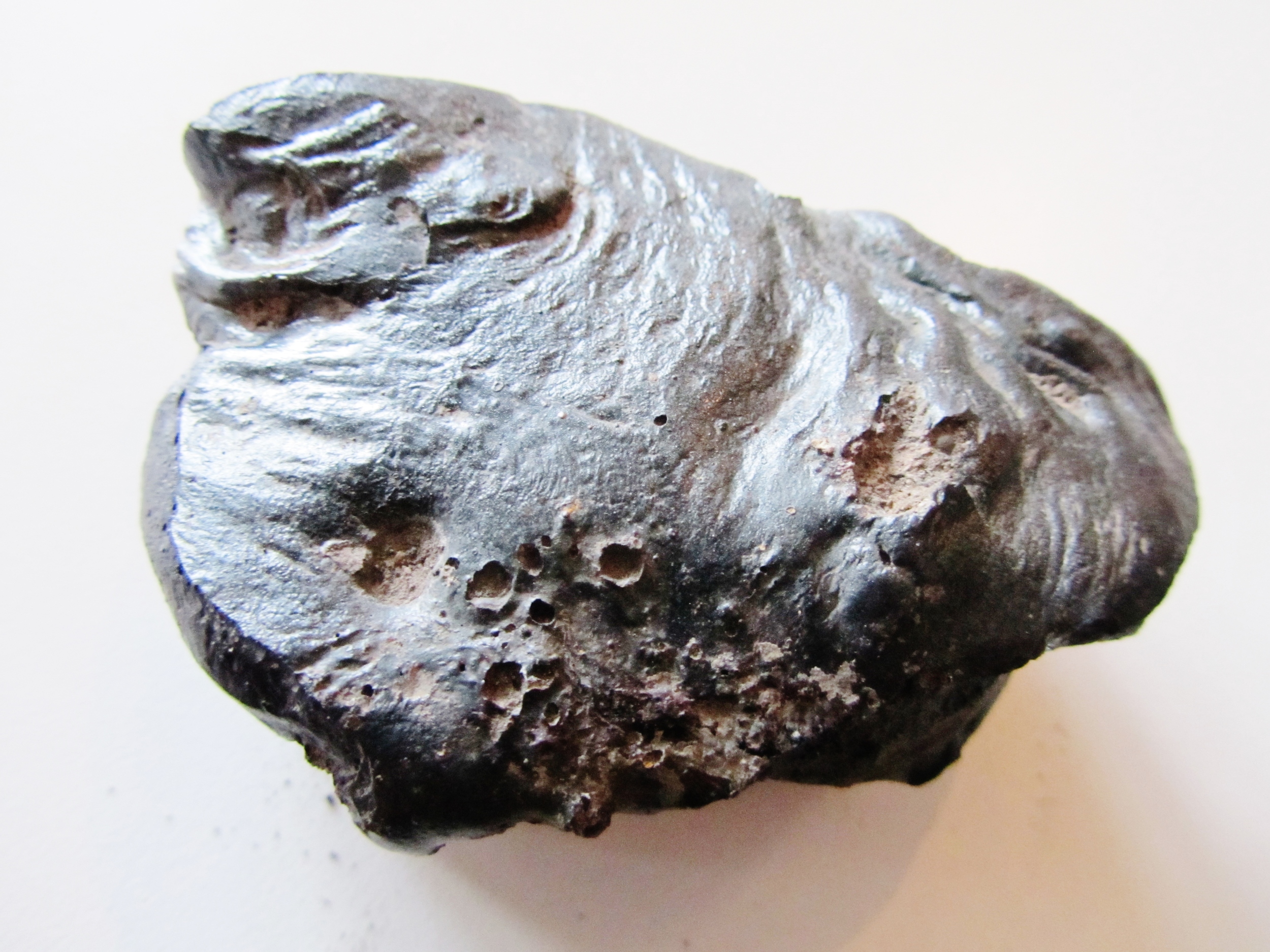This is not a meteorite.
No, honestly. This is not a meteorite.
This is a meteor-wrong! And it is actually man made slag. It may attract a magnet (meteorites should be magnetic) but this is because it can contain iron, often a waste product from smelting. Even though the surface looks like a close up of the surface of some far-off planet, this was actually made by bubbles of gas when this was a material in an industrial process. A meteorite will never have bubbles. The ripples in the surface also tell us it is not a meteorite. Although the surface of a meteorite burns in the atmosphere it just forms a crust (fusion crust) it never melts to solidify in this style.
Today at Manchester Museum the Curator of Earth Sciences Collections, David Gelsthorpe held a workshop on how to identify a meteorite. The above was an example of a meteor-wrong, used to point out the distinguishing features a meteorite should (and shouldn't) have.
These are the first, most basic ways of beginning to identify if the rock you have found is a meteorite:
Question 1. Have you seen a bright light streak across the sky?
Question 2. Have you heard a bang?
Question 3. Have you seen a crater where the meteorite hit the ground?
The Moon's surface is battered with craters from meteorites crashing into it's surface. It gives us an unadulterated view of what their impact looks like.
My black and pyrite Hewn ring and the Museum's lovely 70s model of the Moon.
This is an example of a fusion crust. Where the burnt black areas have chipped off the metallic silvery colour can be seen underneath.
This thumb print shape in the meteorite above is known as a Regmaglypt (which is what the word translates as).
To study a meteorite scientists will cast a model of to record its shape then slice it to look at the inside. This one on the right shows lightning bolt flashes or threads of metal running through it, beautiful!
It's wonderfully exciting to hear about the latest discovery of meteorite-beads found in the jewellery of Ancient Egypt, I'm sure more of their place in history will pop up as studies progress. (more on that here). It combines my love of ancient civilisations, outer space and our lovely natural goodies worn as jewellery! Imagine making jewellery at that time using an item fallen from the sky, it would seem like a gift from the Gods themselves.
Scans of the beads from Manchester Museum, showing their nickel metal content.
Meteorites continue to capture our imagination, so when we find an unusual rock that looks out of place in it's surroundings, we hope that it might be extra-terrestrial. However, meteorites are very rare and there is a long checklist to determine if your miscellaneous chunk is from far, far away...
This online meteorite lab shows you how to look at your specimen using a rotating mock-up.
Here is a link to a great, rather tongue-in-cheek checklist for identifying a meteorite which is also really informative to what else your specimen might be and how it's formed, but be warned you might prefer the mystery...
Meteorite Identification Checklist
The Galactic Exhibition at the Royal Birmingham Society of Artists showcases the work of contemporary craftspeople inspired by the Universe and what lies beyond our skies. It's on until October 19th, with items all available to purchase including a wide selection of my work. If you would like to enquire about a bespoke piece made using your own precious metoerite (or meteor-wrong), or any more questions into my jewellery get in touch! info@jademellor.com









